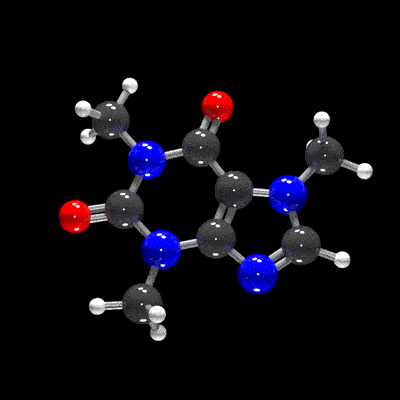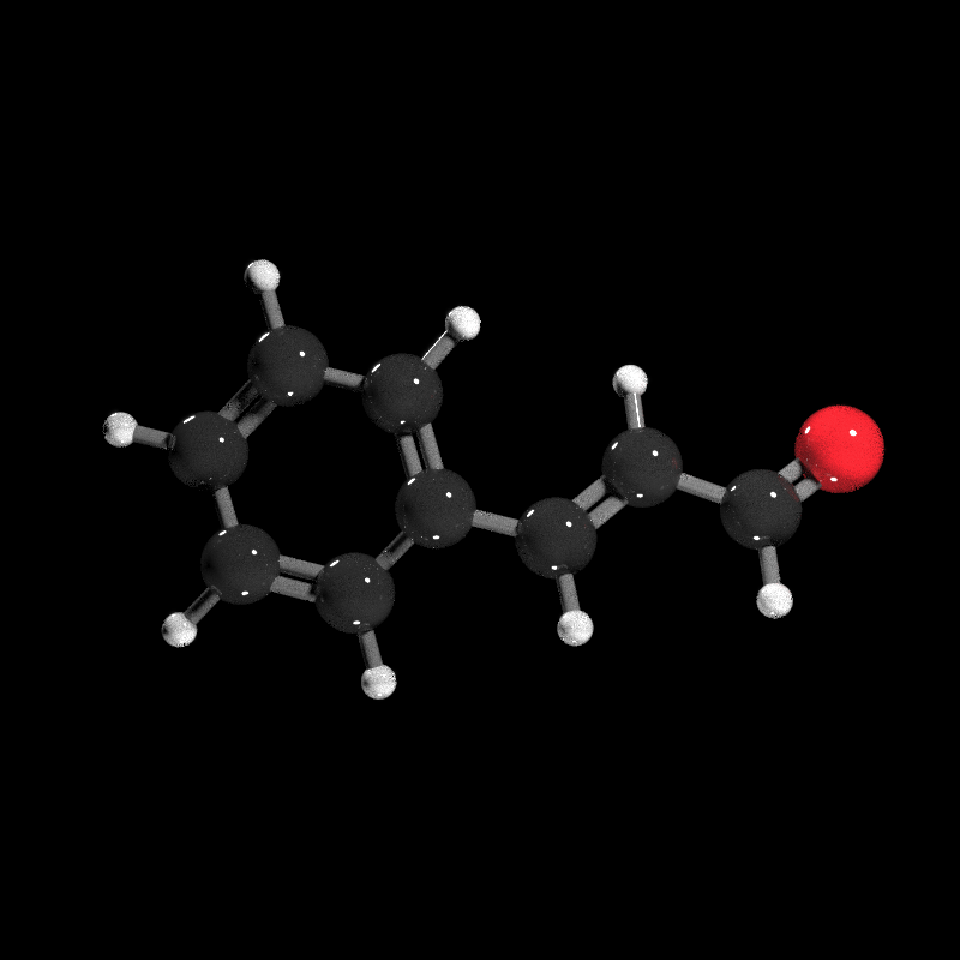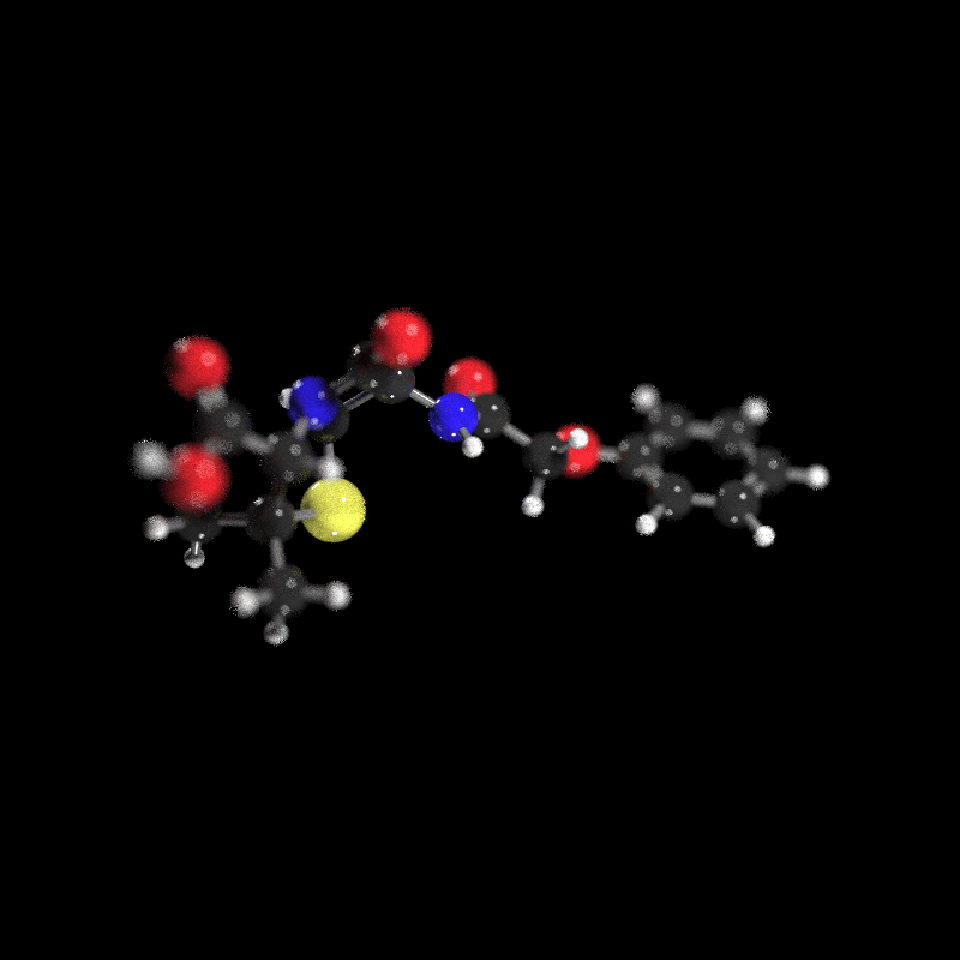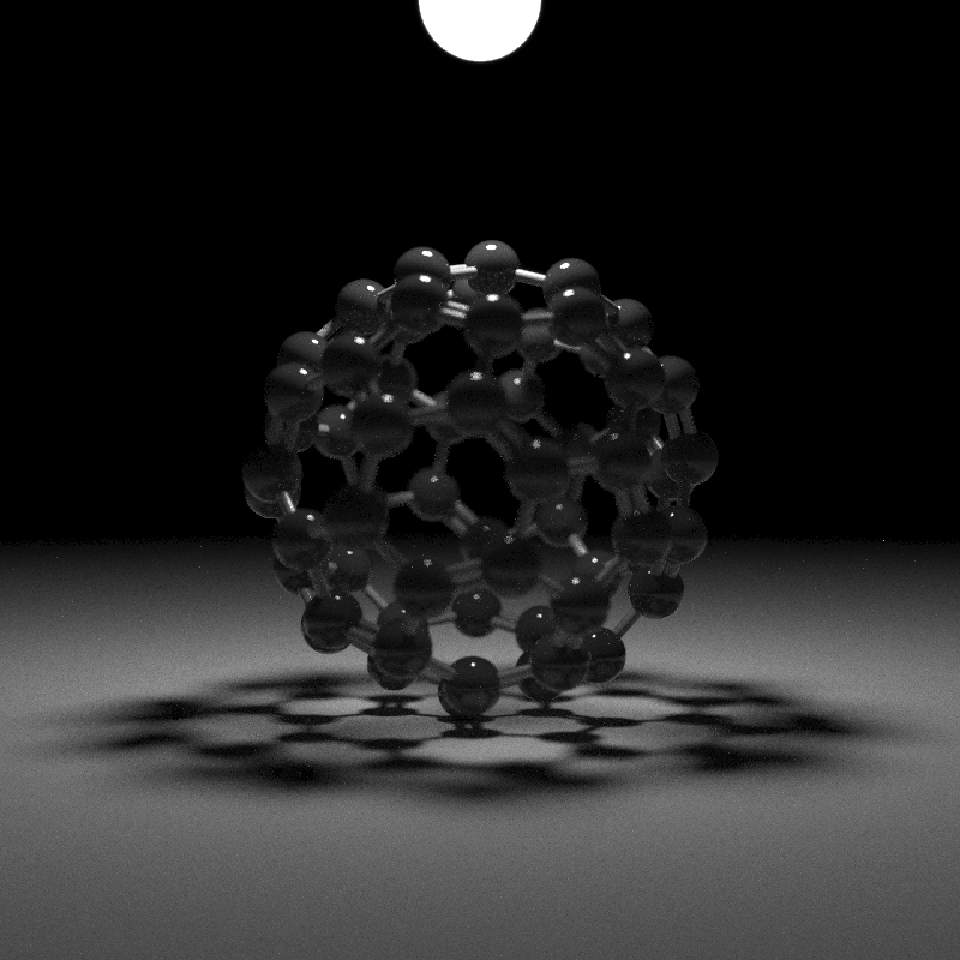raymolecule is an R package to parse and render molecules in 3D.
Rendering is powered by the rayrender
package, a pathtracer for R. raymolecule currently supports and parses
SDF (structure-data file) and PDB (Protein Data Bank) files and returns
a rayrender scene, which we then pathtrace and visualize in R. This
initial release of the package only supports visualizing atoms and
bonds.
You can install the released version of raymolecule from Github:
install.packages("remotes")
remotes::install_github("tylermorganwall/raymolecule")raymolecule includes several example SDF files for the following
molecules: “benzene”, “buckyball”, “caffeine”, “capsaicin”,
“cinnemaldehyde”, “geraniol”, “luciferin”, “morphine”, “penicillin”,
“pfoa”, “skatole”, “tubocurarine_chloride”. You can get the file path
to these example files using the get_example_molecule() function. We
pass this path to the read_sdf() file to parse the file and extract
the atom coordinates and bond information in a list. The magrittr pipe
is automatically imported in the package, so we will use it to pass the
output of each function to the input of the next.
Here’s the format of the data:
library(raymolecule)
get_example_molecule("benzene") %>%
read_sdf()
#> $atoms
#> x y z type index
#> 1 -1.2131 -0.6884 0e+00 C 1
#> 2 -1.2028 0.7064 1e-04 C 2
#> 3 -0.0103 -1.3948 0e+00 C 3
#> 4 0.0104 1.3948 -1e-04 C 4
#> 5 1.2028 -0.7063 0e+00 C 5
#> 6 1.2131 0.6884 0e+00 C 6
#> 7 -2.1577 -1.2244 0e+00 H 7
#> 8 -2.1393 1.2564 1e-04 H 8
#> 9 -0.0184 -2.4809 -1e-04 H 9
#> 10 0.0184 2.4808 0e+00 H 10
#> 11 2.1394 -1.2563 1e-04 H 11
#> 12 2.1577 1.2245 0e+00 H 12
#>
#> $bonds
#> from to number NA NA NA NA
#> 1 1 2 2 0 0 0 0
#> 2 1 3 1 0 0 0 0
#> 3 1 7 1 0 0 0 0
#> 4 2 4 1 0 0 0 0
#> 5 2 8 1 0 0 0 0
#> 6 3 5 2 0 0 0 0
#> 7 3 9 1 0 0 0 0
#> 8 4 6 2 0 0 0 0
#> 9 4 10 1 0 0 0 0
#> 10 5 6 1 0 0 0 0
#> 11 5 11 1 0 0 0 0
#> 12 6 12 1 0 0 0 0We can then pass this list to the generate_full_scene(),
generate_atom_scene(), or generate_bond_scene() functions to convert
this representation to a rayrender scene. This can then be passed on the
render_model() function, which will call rayrender’s render_scene()
function to render it. This function automatically ensures the molecule
is centered and in frame, and sets up lighting, and can accept arguments
to rotate the molecule. For more rendering options, see
rayrender::render_scene().
#Specify a width, height, and number of samples for the image (more samples == less noise)
get_example_molecule("caffeine") %>%
read_sdf() %>%
generate_full_scene() %>%
render_model(width=800,height=800,samples=1000, clamp_value=10)#Light from both bottom and top
get_example_molecule("cinnemaldehyde") %>%
read_sdf() %>%
generate_full_scene() %>%
render_model(lights="both",width=800,height=800,samples=1000,clamp_value=10)#Rotate the molecule and add a non-zero aperture setting to get depth of field effect
get_example_molecule("penicillin") %>%
read_sdf() %>%
generate_full_scene() %>%
render_model(lights="both",width=800,height=800,samples=1000,angle=c(0,30,0),aperture=3,
clamp_value=10)You can turn off lighting in render_model() and customize the scene
(adding different objects or lights) by using rayrender’s add_object()
function. If you use rayrender::render_scene() instead of
render_model(), you have to set up the camera position and field of
view yourself.
library(rayrender)
buckyball = get_example_molecule("buckyball") %>%
read_sdf() %>%
generate_full_scene()
#Add custom lighting
buckyball %>%
add_object(sphere(y=12,radius=3,material=light(color="white", intensity=50))) %>%
add_object(sphere(y=-12,radius=3,material=light(color="red", intensity=50))) %>%
render_model(lights="none",width=800,height=800,samples=1000, clamp_value=10)#Generate ground underneath the model and use a light to cast a shadow
generate_ground(depth=-4,material=diffuse(sigma=90)) %>%
add_object(buckyball) %>%
add_object(sphere(y=8,material=light(intensity=100))) %>%
render_scene(width=800,height=800,samples=1000,aperture=1,fov=30,lookfrom = c(0,1,30),
clamp_value = 10)




